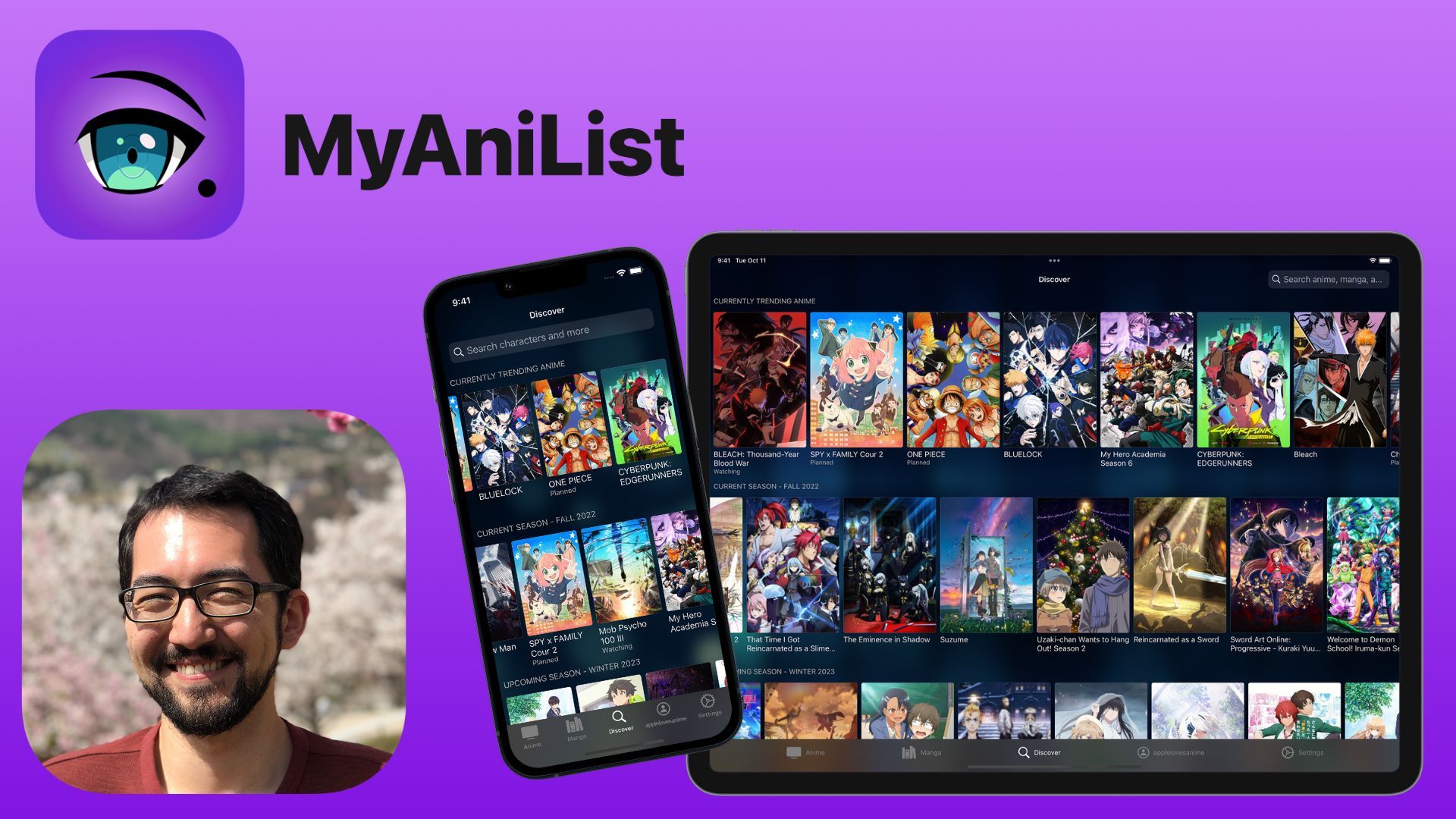Corey switched from Google Analytics to TelemetryDeck because the analytics are easier to understand
MyAniList is an app that helps users keep track of their anime and manga consumption. It synchronizes watched shows and read books to AniList.co, a comprehensive anime database website. The app was released in 2013 and has over 100,000 monthly active users.

My target audience is primarily people interested in discovering anime and manga, tracking their content consumption, and comparing their lists and stats with friends. MyAniList provides an easy way to find trending, highly rated, and popular series from around the world, helping users uncover a future favorite or past classic every day! The app also displays ratings and popularity ranks based on community vote, and keeps track of the number of episodes watched and chapters read. The user numbers are rising due to the growing global popularity of anime and manga.
As someone who works professionally on iOS applications, I consider how much trust they need to build for the consumer to feel safe. Analytics, while seemingly harmless, can be used to target specific consumer groups with too much contextual data on those consumers, in an effort to keep bringing them back to their apps. This is not only detrimental to the human psyche, but it also creates fear in people, knowing that a company may know too much about them, even though they have not provided that information willingly.
When I learned about TelemetryDeck's focus on privacy and data protection, it was obvious that they wanted to break the trend of damaging analytics and give the consumer full control.
It was clear that TelemetryDeck was the answer I was looking for.
I initially added TelemetryDeck alongside Google Analytics to compare how analytics were collected between the two. After exploring the dashboard and creating insights for customer settings, I realized how much easier it was to understand the analytics. TelemetryDeck's commitment to data protection and privacy made it an easy decision to move forward with them.
Because the framework is also so lightweight, it became a huge relief for me to remove the numerous frameworks I needed just for Google Analytics.
The onboarding process was straightforward. After signing up, I installed the SDK using Swift Package Manager, added the few necessary lines of code, and received analytics feedback through the Viewer Dashboard right away.
The biggest challenge was figuring out how to optimize my analytics so that I wasn't collecting too many signals for a given user daily. Since MyAniList can have relatively heavy traffic, I was in danger of exceeding the number of signals allowed by TelemetryDeck's Indie plan if I wasn't careful. To avoid this, I created a strategy that sends one signal per day for an active user, as this is the analytics I value most for understanding how features and preferences are being used.
I love checking out the Dashboard app regularly to see adoption rates for new app versions, current user stats, and user settings people use. It also helps me understand the kinds of settings people like to use, as well as the level of support I should continue to include when I look at the operating system and device breakdown charts.
TelemetryDeck provides answers on how popular certain features and settings are. For example, I was able to gain insight into how popular certain icons and themes were! I was surprised to find that certain visual styles I had included as part of MyAniList's paid subscription were much more popular than I had anticipated. This gave me a better understanding of the levels of customization and settings that my consumers use on a day-to-day basis, rather than relying solely on my own personal opinions.
I recommend TelemetryDeck for those who prioritize data protection and privacy, as well as having full control over which analytics are collected.

MyAniList
undefined
MyAniList helps you keep track of your anime and manga consumption. It synchronizes watched shows and read books to AniList.co.
